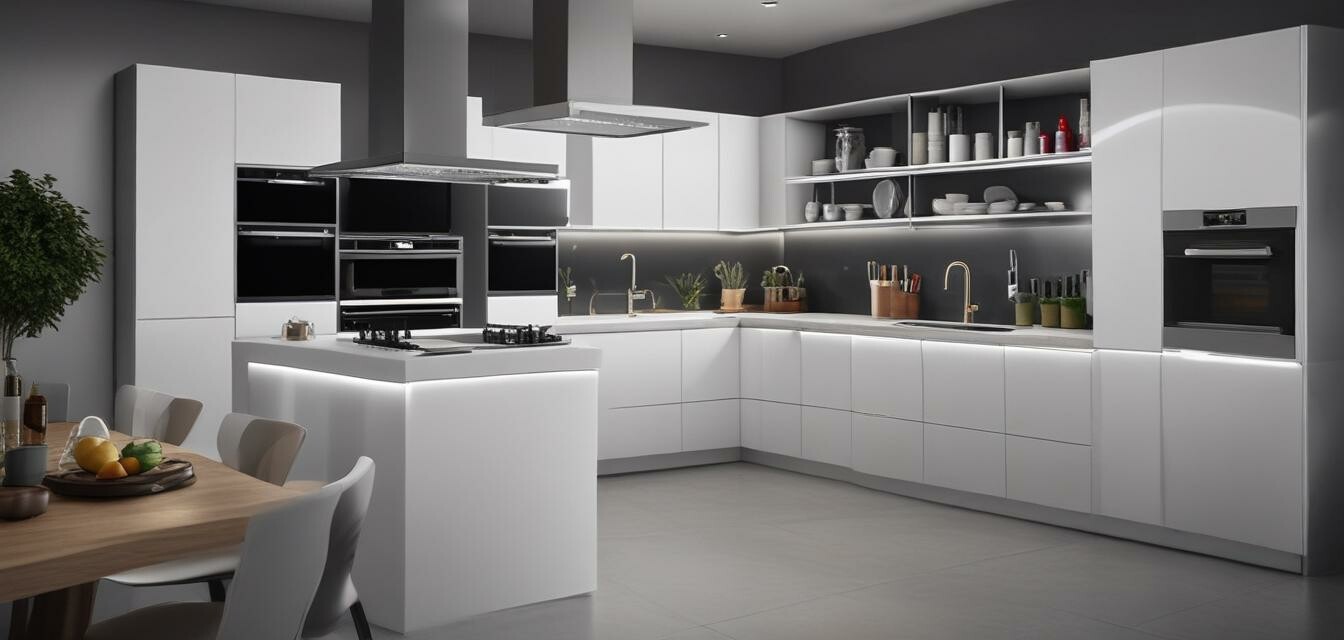
The future of smart kitchen appliances: 2025 vision
Key Takeaways
- The smart kitchen landscape is rapidly evolving, with a focus on convenience and efficiency.
- Innovations like AI integration and IoT connectivity are reshaping traditional cooking methods.
- Environmentally friendly appliances are gaining popularity among consumers.
- Hands-free technology like voice commands is becoming standard in modern kitchens.
- Collaboration between appliances is enhancing user experiences and kitchen management.
As we look towards the future of smart kitchen appliances, it’s essential to note how technology continuously alters our culinary environments. As we approach 2025, current trends will likely integrate into everyday kitchen experiences, offering convenience, efficiency, and energy savings like never before.
Evolution of smart kitchen appliances
The journey of kitchen appliances began with simple gadgets designed to assist in food preparation. Over the years, as technology advanced, we have transitioned to more sophisticated devices. These innovations not only simplify cooking but also enhance overall kitchen functionality. Some key innovations include:
- Bluetooth-enabled appliances: Devices that connect to your smartphone for remote monitoring and control.
- Artificial intelligence integration: Smart appliances that learn your cooking preferences and suggest recipes.
- Touchless technology: Hands-free faucets and ovens operated via voice commands.
- Eco-friendly energy solutions: Appliances designed to reduce energy consumption and carbon footprint.
Key trends shaping the future
Several significant trends are likely to shape the smart kitchen device market by 2025:
| Trend | Description |
|---|---|
| Smart integrations | Increased interoperability among different kitchen gadgets for seamless operation. |
| Health and wellness | The incorporation of smart appliances that provide nutritional information and tips for healthier cooking. |
| Home automation | Integrated systems that allow you to automate not just cooking but the entire kitchen experience, including lighting and temperature control. |
| Remote cooking | Increased ability to prepare meals remotely, allowing busy individuals to come home to a finished dish. |
The role of artificial intelligence
Artificial intelligence (AI) is set to play a significant role in the evolution of smart kitchen appliances. AI technology can comprehend user preferences, dietary restrictions, and cooking habits, which allows appliances to create customized cooking experiences. This technology will change the way we think about meal preparation, as shown in ways such as:
- Smart recipe suggestions based on available ingredients.
- Cooking adjustments based on real-time temperature monitoring.
- Automated cleaning features post-cook.
Smart home connectivity
Another notable trend is the rise of connectivity among smart home devices. With advancements in Internet of Things (IoT) technology, your kitchen appliances can communicate with each other more efficiently. This interconnectedness enhances your cooking experience through:
- Coordinated cooking schedules between a smart oven and a smart fridge.
- Alerts for when ingredients are low or a need for restocking is required.
If you're interested in exploring more about connected kitchen gadgets, check out our article on Bluetooth-enabled appliances for an in-depth look.
Environmentally friendly advancements
As consumers become increasingly eco-conscious, kitchen appliance manufacturers are focusing on sustainability. By 2025, we expect to see:
- More energy-efficient products that consume less electricity.
- Appliances made from recycled materials.
- Technologies that reduce water usage, particularly in dishwashers and faucets.
Learn more about eco-friendly options in our guide on smart kitchen buying guides that highlights sustainable choices.
The emergence of touchless technology
Touchless devices are becoming increasingly popular as they enhance hygiene and convenience in the kitchen. Innovations such as:
- Smart faucets that can be controlled using hand gestures or voice commands.
- Ovens that can preheat with vocal acknowledgment.
For more on this topic, consider our section on touchless faucets to understand the latest touchless innovations.
Collaborative appliances for seamless usability
Collaboration among appliances is on the rise, promising a smoother cooking experience. Several manufacturers are developing multi-functional devices that perform more than one task at a time, significantly saving time and energy.
Example of collaborative technologies
| Collaborative Feature | Description |
|---|---|
| Smart ovens with integrated air fryers | Cook foods with healthy alternatives without requiring additional kitchen space. |
| Built-in refrigerator touch screens | Access recipes, create shopping lists, and monitor pantry stock directly from your fridge. |
Conclusion
The future of smart kitchens is brighter than ever. As we step into 2025, the integration of advanced technology, sustainability, and connectivity will transform the way we cook and interact with our kitchen appliances. Stay tuned to our blog for more updates on kitchen technology news as these exciting developments unfold.
Pros
- Enhanced convenience for busy individuals.
- Time-saving through automation and smart recommendations.
- Environmentally friendly options that promote sustainability.
- Improved hygiene with touchless technology.
Cons
- Potential high costs of advanced smart appliances.
- Dependence on stable Wi-Fi connections for optimal performance.
- Learning curve associated with new technologies.